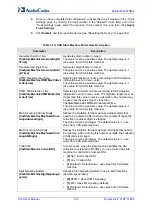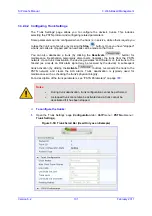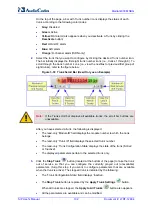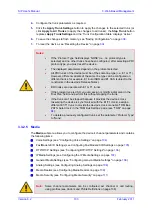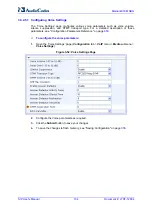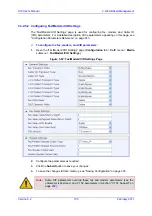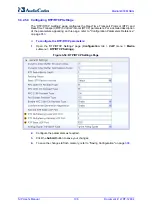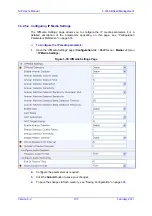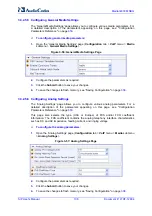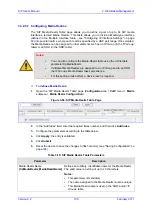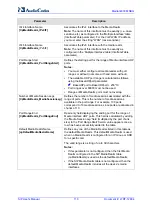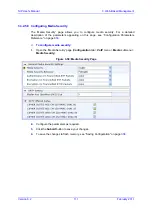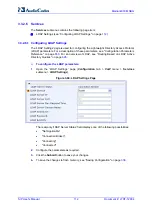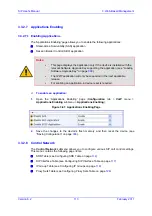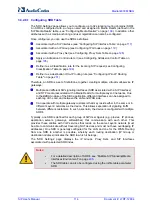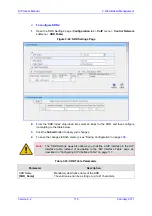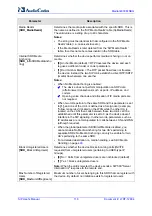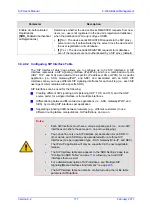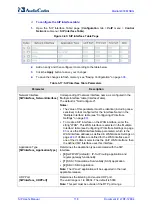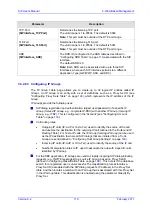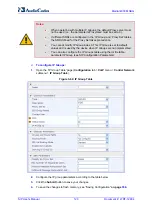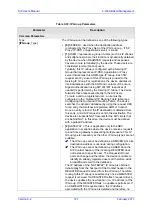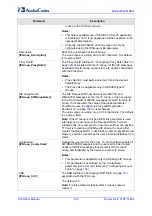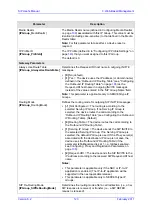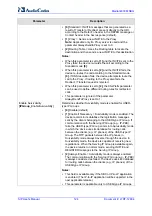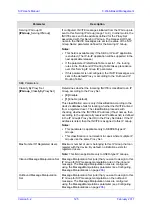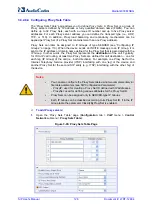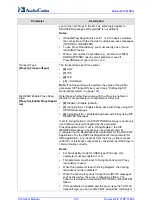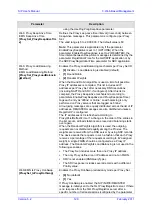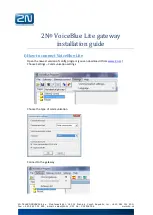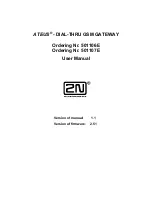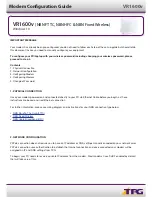
SIP User's Manual
114
Document #: LTRT-12804
Mediant 800 MSBG
3.3.2.8.1 Configuring SRD Table
The 'SRD Settings' page allows you to configure up to 32 signaling routing domains (SRD).
An SRD is configured with a unique name and assigned a Media Realm (defined in the
'SIP Media Realm' table - see ''Configuring Media Realms'' on page
). In addition, other
attributes such as media anchoring and user registration can also be configured.
Once configured, you can use the SRDs as follows:
Associate it with a SIP Interface (see ''Configuring SIP Interface Table'' on page
Associate it with an IP Group (see Configuring IP Groups on page
Associate it with a Proxy Set (see Configuring Proxy Sets Table on page
)
Apply an Admission Control rule to it (see Configuring Admission Control Table on
page
)
Define it as a Classification rule for the incoming SIP request (see Configuring
Classification Table on page
)
Define it as a destination IP-to-IP routing rule (see ''Configuring IP-to-IP Routing
Table'' on page
Therefore, an SRD is a set of definitions, together creating multiple, virtual multi-service IP
gateways:
Multiple and different SIP signaling interfaces (SRD associated with a SIP Interface)
and RTP media (associated with a Media Realm) for multiple Layer-3 networks. Due
to the B2BUA nature of the SBC application, different interfaces can be assigned to
each leg of the call, and between the LAN and WAN side.
Can operate with multiple gateway customers that may reside either in the same or in
different Layer-3 networks as the device. This allows separation of signaling traffic
between different customers. In such a scenario, the device is configured with multiple
SRD's.
Typically, one SRD is defined for each group of SIP User Agents (e.g. proxies, IP phones,
application servers, gateways, softswitches) that communicate with each other. This
provides these entities with VoIP services that reside on the same Layer-3 network (must
be able to communicate without traversing NAT devices and must not have overlapping IP
addresses). One SRD is generally configured for the LAN and one for the WAN. Routing
from one SRD to another is possible, whereby each routing destination (IP Group or
destination address) indicates the SRD to which it belongs.
The 'SRD Settings' page displays the IP Groups, Proxy Sets, and SIP Interfaces
associated with a selected SRD index.
Notes:
•
For a detailed description of SRD's, see ''Multiple SIP Signaling/Media
Interfaces Environment'' on page
•
The SRD table can also be configured using the
ini
file table parameter
SRD.
Summary of Contents for Mediant 800 MSBG
Page 2: ......
Page 366: ...SIP User s Manual 366 Document LTRT 12804 Mediant 800 MSBG Reader s Notes ...
Page 372: ...SIP User s Manual 372 Document LTRT 12804 Mediant 800 MSBG Reader s Notes ...
Page 390: ...SIP User s Manual 390 Document LTRT 12804 Mediant 800 MSBG Reader s Notes ...
Page 404: ...SIP User s Manual 404 Document LTRT 12804 Mediant 800 MSBG Reader s Notes ...
Page 616: ...SIP User s Manual 616 Document LTRT 12804 Mediant 800 MSBG Reader s Notes ...
Page 636: ...SIP User s Manual 636 Document LTRT 12804 Mediant 800 MSBG Reader s Notes ...
Page 652: ...SIP User s Manual 652 Document LTRT 12804 Mediant 800 MSBG Reader s Notes ...
Page 886: ...SIP User s Manual 886 Document LTRT 12804 Mediant 800 MSBG Reader s Notes ...

